The shark dorsal fin is one of the most characteristic aspects of a shark’s anatomy. It is a large fin located on the top of the shark’s midsection that helps give it stability, streamlines its body for swimming and manoeuvres, and can communicate with other sharks. The dorsal fin is vital in helping the shark survive and thrive in its environment.
In addition to their dorsal fin, sharks possess other fins, which I will cover in this article. I will discuss the anatomy and function of the shark’s dorsal fin.
How Many Fins Do Sharks Have?
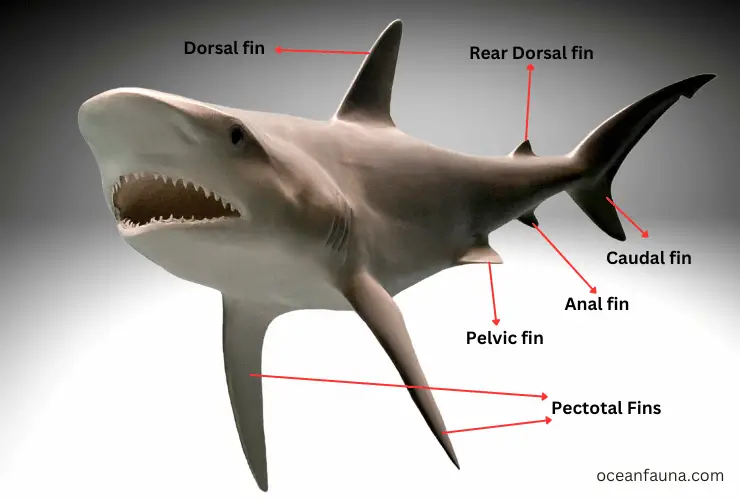
Sharks are known for their distinct fin structure, which plays a crucial role in underwater movement and guidance. Most sharks have eight fins, which include a pair of pectoral fins, a pair of pelvic fins, two dorsal fins, an anal fin, and a caudal fin.
Pectoral fins
The pectoral fins are the shark’s largest and most prominent fins. They are stiff and pointed, which enables downward movement, lift, and guidance. These fins are responsible for the shark’s precise and agile movements, making them expert swimmers underwater.
Pelvic fins
The pelvic fins are on the bottom of the shark’s body, near the tail. They serve as stabilizers during swimming and also play a role in steering the shark.
Dorsal fins
The dorsal fins are located on the shark’s back, and most sharks have two of them. These fins serve multiple purposes, such as stability during swimming and a counterbalance to the shark’s underbelly weight. The members of the order Hexanchiformes have only a single dorsal fin, which is a unique feature in the shark’s anatomy.
In the further discussion of this article, you get to know more about the shark dorsal fin.
Anal fin
The anal fin is located near the shark’s tail and is responsible for maintaining balance during swimming. It works alongside the caudal fin, which is the shark’s most recognizable feature.
Caudal fin
The caudal fin, commonly known as the shark’s tail, is responsible for the shark’s propulsion and movement in the water. The shape and size of the caudal fin vary depending on the shark’s species, with some having a crescent shape while others have a triangular shape.
Shark Dorsal Fin: Anatomical Structure
Sharks have a crucial physical trait called the dorsal fin, which is responsible for their distinct look and helps them swim and maintain balance. The dorsal fins on the shark’s back are generally seen in pairs, except for in the Hexanchiformes group of sharks, which have only one dorsal fin.
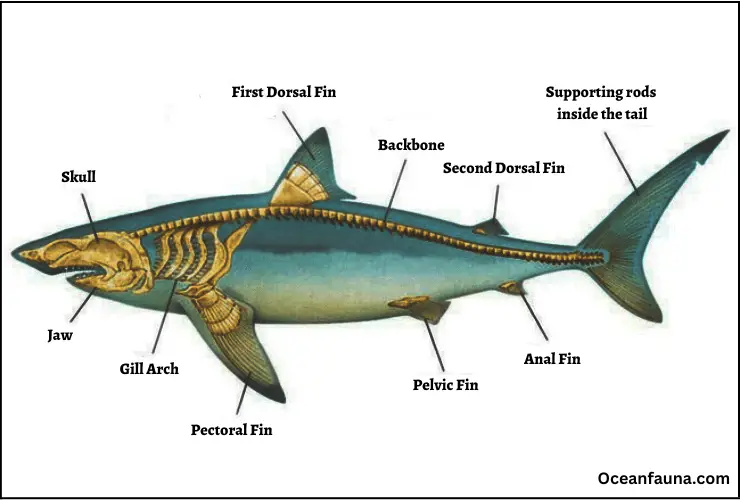
The structure of the dorsal fin varies depending on the species of the shark, but generally, the dorsal fin can be described as a stiff, upright, triangular-shaped structure composed of cartilage and covered by a layer of skin. The size and shape of the dorsal fin can also vary between shark species, ranging from small and rounded to large and pointed.
The base of the dorsal fin is attached to the shark’s spine, providing support and stability during swimming. The fin is rigid and immobile, allowing the shark to maintain its position and orientation in the water. The spines within the fin are composed of tough, fibrous material that strengthens and supports the shark’s body during fast movements and sharp turns.
The dorsal fin also serves as a counterbalance for the shark. As its underbelly is significantly heavier than the rest of the body, the dorsal fin helps the shark maintain balance while swimming, reducing the risk of tumbling headfirst or tail heavy. This feature is particularly crucial for larger sharks with a relatively higher centre of gravity.
Moreover, the dorsal fin and the pectoral fins play a critical role in the shark’s stability during swimming. The shark uses these fins to maintain a straight course and adjust its position in the water, which is essential for hunting and avoiding predators.
Shark Dorsal Fin: Functions
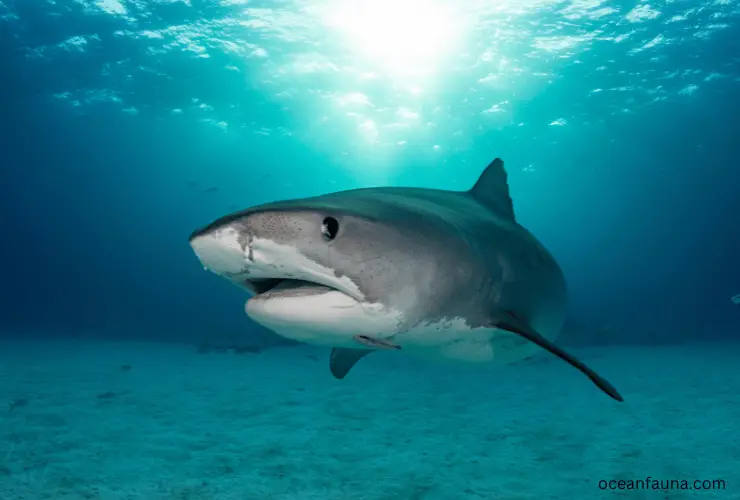
A shark’s dorsal fin is a remarkable structure that serves several important functions. Its morphology and position vary among species depending on their ecological niche, but all dorsal fins share common features that allow them to perform their role effectively.
Stability and Balance
One primary function of the dorsal fin is stabilizing and balancing the shark’s body. As sharks swim, the dorsal fin acts as a rudder, maintaining the necessary stability to prevent it from rolling to the side. This feature is crucial because most sharks have a slender body shape and lack any bony protection; hence toppling over can lead to injuries or even death.
Directional Control
The dorsal fin also aids in directional control, permitting sharks to make precise turns or adjustments while swimming. By curving its body, a shark can use its dorsal fin to shift its direction and maintain tight turns, making it an essential aid in hunting and escaping predators.
Energy Conservation
Sharks are known for their unparalleled swimming capabilities, which depend on energy conservation. The dorsal fin helps to reduce the animal’s energy expenditure by creating a low-pressure area behind it, enabling the tail muscles to work effectively, thereby producing forward thrust with minimal effort.
Studies have shown that the trailing edge of the first dorsal fin enhances the tail’s efficiency and reduces drag, therefore increasing the shark’s swimming speed and reducing energy consumption. This feature gives the shark its reputation as an apex predator who can cover long distances with minimal effort.
Thermoregulation
Another function of the dorsal fin is thermoregulation, which helps to regulate the shark’s body temperature. The dorsal fin is richly supplied with blood vessels and lined with a layer of skin that assists in regulating body temperature.
Sharks can adjust their dorsal fin’s position concerning the sun to minimize direct exposure to heat, thereby preventing overheating and thermal stress.
Can Sharks Live Without Their Dorsal Fins?
The dorsal fin on a shark’s back is important for its swimming abilities and helps it balance and move through the water. Sharks are crucial to the marine ecosystem because they play a vital role in maintaining the ocean’s food web balance. If a shark loses or damages its dorsal fin, it can have serious consequences.
Sharks require a constant flow of water through their gills to breathe. If they stop swimming, they cannot force water through their gills, leading to suffocation. Additionally, sharks also depend on their dorsal fins to swim efficiently.
Without it, they become slower, less manoeuvrable, and less agile, which means they will struggle to catch prey and evade predators.
Although the first, larger dorsal fin is critical for maintaining shark swimming stability, some species of sharks, including adult reef sharks, can survive without it. Reef sharks can adapt to the loss of their dorsal fin and continue to swim, albeit not as efficiently as they would with their dorsal fin intact.
However, they may have to adjust their swimming style to compensate for the loss, which can be stressful and exhausting.
Moreover, sharks that lose their dorsal fin can become easy targets for other fish that prey on them. Sharks become slower and less agile without the dorsal fin, making them easy targets for other predators in the ocean. The loss of their dorsal fins can also lead to significant blood loss, making it difficult for the shark to survive in their natural habitat.
Can Shark Dorsal Fins Grow Back?
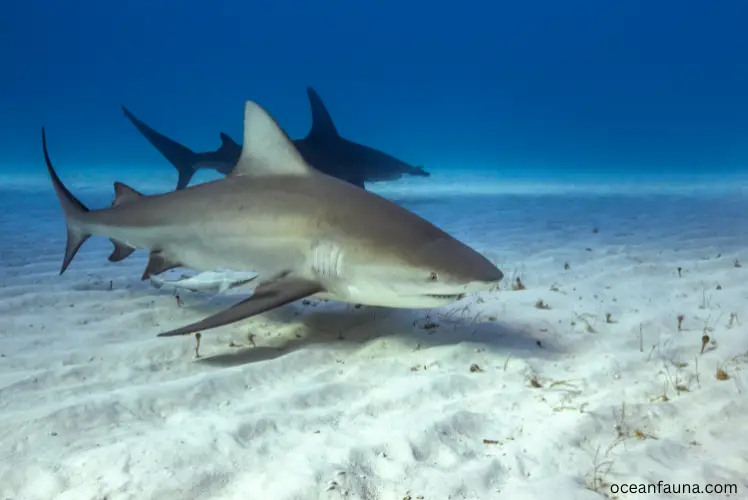
Unfortunately, shark dorsal fins will not grow back once they have been lost. This is because, unlike many other fish, sharks cannot regenerate their fins.
Shark dorsal fins are composed of tough cartilage material that does not contain blood vessels or nerve endings. This means that if the fin is lost through natural causes or human intervention (such as shark finning), there is no way for the shark to build it back up again.
The loss of a dorsal fin can have serious implications for a shark’s survival. The dorsal fin plays a crucial role in helping the shark maintain balance and stability in the water and providing lift for efficient swimming. Without a dorsal fin, a shark may struggle to move, hunt or escape predators, making it more vulnerable to injury and death.
While the loss of a dorsal fin is a significant setback for a shark, it is not always fatal. Some species of shark, such as the lemon shark, have been found to adapt to the loss of a dorsal fin by relying more on their pectoral fins for stability and propulsion.
However, this is not always possible, and it is clear that any kind of fin loss can have serious consequences for these already vulnerable animals.
Conclusion
Now you have a deep analysis of the role of shark dorsal fins and how they can affect their survival in the wild. Shark finning is a cruel practice that causes unnecessary suffering to these animals and threatens their survival in the wild.
As such, we need to take action and help protect sharks by advocating for stricter regulations on fishing practices. By doing our part, we can help ensure that these majestic creatures remain in our oceans for generations to come.

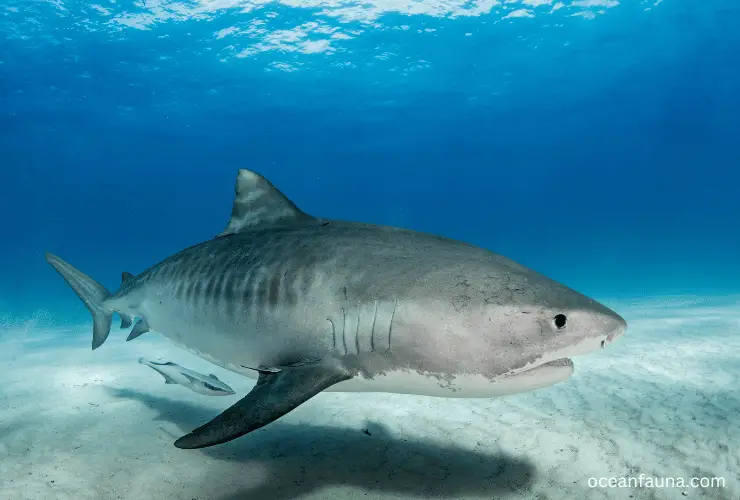
3 thoughts on “Shark Dorsal Fin: Anatomical Structure and Functions”